Föstudagur, 30. maí 2008
History of BIBLE TRANSLATIONS ( Saga þýðinga Biblíurnar )
English Bible History
The fascinating story of how we got the Bible in its present form actually starts thousands of years ago, as briefly outlined in our Timeline of Bible Translation History. As a background study, we recommend that you first review our discussion of the Pre-Reformation History of the Bible from 1,400 B.C. to 1,400 A.D., which covers the transmission of the scripture through the original languages of Hebrew and Greek, and the 1,000 years of the Dark & Middle Ages when the Word was trapped in only Latin. Our starting point in this discussion of Bible history, however, is the advent of the scripture in the English language with the “Morning Star of the Reformation”, John Wycliffe.
The first hand-written English language Bible manuscripts were produced in the 1380's AD by John Wycliffe, an Oxford professor, scholar, and theologian. Wycliffe, (also spelled “Wycliff” & “Wyclif”), was well-known throughout Europe for his opposition to the teaching of the organized Church, which he believed to be contrary to the Bible. With the help of his followers, called the Lollards, and his assistant Purvey, and many other faithful scribes, Wycliffe produced dozens of English language manuscript copies of the scriptures. They were translated out of the Latin Vulgate, which was the only source text available to Wycliffe. The Pope was so infuriated by his teachings and his translation of the Bible into English, that 44 years after Wycliffe had died, he ordered the bones to be dug-up, crushed, and scattered in the river!
One of Wycliffe’s followers, John Hus, actively promoted Wycliffe’s ideas: that people should be permitted to read the Bible in their own language, and they should oppose the tyranny of the Roman church that threatened anyone possessing a non-Latin Bible with execution. Hus was burned at the stake in 1415, with Wycliffe’s manuscript Bibles used as kindling for the fire. The last words of John Hus were that, “in 100 years, God will raise up a man whose calls for reform cannot be suppressed.” Almost exactly 100 years later, in 1517, Martin Luther nailed his famous 95 Theses of Contention (a list of 95 issues of heretical theology and crimes of the Roman Catholic Church) into the church door at Wittenberg. The prophecy of Hus had come true! Martin Luther went on to be the first person to translate and publish the Bible in the commonly-spoken dialect of the German people; a translation more appealing than previous German Biblical translations. Foxe’s Book of Martyrs records that in that same year, 1517, seven people were burned at the stake by the Roman Catholic Church for the crime of teaching their children to say the Lord’s Prayer in English rather than Latin.
Johann Gutenberg invented the printing press in the 1450's, and the first book to ever be printed was a Latin language Bible, printed in Mainz, Germany. Gutenberg’s Bibles were surprisingly beautiful, as each leaf Gutenberg printed was later colorfully hand-illuminated. Born as “Johann Gensfleisch” (John Gooseflesh), he preferred to be known as “Johann Gutenberg” (John Beautiful Mountain). Ironically, though he had created what many believe to be the most important invention in history, Gutenberg was a victim of unscrupulous business associates who took control of his business and left him in poverty. Nevertheless, the invention of the movable-type printing press meant that Bibles and books could finally be effectively produced in large quantities in a short period of time. This was essential to the success of the Reformation.
In the 1490’s another Oxford professor, and the personal physician to King Henry the 7th and 8th, Thomas Linacre, decided to learn Greek. After reading the Gospels in Greek, and comparing it to the Latin Vulgate, he wrote in his diary, “Either this (the original Greek) is not the Gospel… or we are not Christians.” The Latin had become so corrupt that it no longer even preserved the message of the Gospel… yet the Church still threatened to kill anyone who read the scripture in any language other than Latin… though Latin was not an original language of the scriptures.
In 1496, John Colet, another Oxford professor and the son of the Mayor of London, started reading the New Testament in Greek and translating it into English for his students at Oxford, and later for the public at Saint Paul’s Cathedral in London. The people were so hungry to hear the Word of God in a language they could understand, that within six months there were 20,000 people packed in the church and at least that many outside trying to get in! (Sadly, while the enormous and beautiful Saint Paul’s Cathedral remains the main church in London today, as of 2003, typical Sunday morning worship attendance is only around 200 people… and most of them are tourists). Fortunately for Colet, he was a powerful man with friends in high places, so he amazingly managed to avoid execution.
In considering the experiences of Linacre and Colet, the great scholar Erasmus was so moved to correct the corrupt Latin Vulgate, that in 1516, with the help of printer John Froben, he published a Greek-Latin Parallel New Testament. The Latin part was not the corrupt Vulgate, but his own fresh rendering of the text from the more accurate and reliable Greek, which he had managed to collate from a half-dozen partial old Greek New Testament manuscripts he had acquired. This milestone was the first non-Latin Vulgate text of the scripture to be produced in a millennium… and the first ever to come off a printing press. The 1516 Greek-Latin New Testament of Erasmus further focused attention on just how corrupt and inaccurate the Latin Vulgate had become, and how important it was to go back and use the original Greek (New Testament) and original Hebrew (Old Testament) languages to maintain accuracy… and to translate them faithfully into the languages of the common people, whether that be English, German, or any other tongue. No sympathy for this “illegal activity” was to be found from Rome… even as the words of Pope Leo X's declaration that "the fable of Christ was quite profitable to him" continued through the years to infuriate the people of God.
William Tyndale was the Captain of the Army of Reformers, and was their spiritual leader. Tyndale holds the distinction of being the first man to ever print the New Testament in the English language. Tyndale was a true scholar and a genius, so fluent in eight languages that it was said one would think any one of them to be his native tongue. He is frequently referred to as the “Architect of the English Language”, (even more so than William Shakespeare) as so many of the phrases Tyndale coined are still in our language today.
Martin Luther had a small head-start on Tyndale, as Luther declared his intolerance for the Roman Church’s corruption on Halloween in 1517, by nailing his 95 Theses of Contention to the Wittenberg Church door. Luther, who would be exiled in the months following the Diet of Worms Council in 1521 that was designed to martyr him, would translate the New Testament into German for the first time from the 1516 Greek-Latin New Testament of Erasmus, and publish it in September of 1522. Luther also published a German Pentateuch in 1523, and another edition of the German New Testament in 1529. In the 1530’s he would go on to publish the entire Bible in German.
William Tyndale wanted to use the same 1516 Erasmus text as a source to translate and print the New Testament in English for the first time in history. Tyndale showed up on Luther's doorstep in Germany in 1525, and by year's end had translated the New Testament into English. Tyndale had been forced to flee England, because of the wide-spread rumor that his English New Testament project was underway, causing inquisitors and bounty hunters to be constantly on Tyndale's trail to arrest him and prevent his project. God foiled their plans, and in 1525-1526 the Tyndale New Testament became the first printed edition of the scripture in the English language. Subsequent printings of the Tyndale New Testament in the 1530's were often elaborately illustrated.
They were burned as soon as the Bishop could confiscate them, but copies trickled through and actually ended up in the bedroom of King Henry VIII. The more the King and Bishop resisted its distribution, the more fascinated the public at large became. The church declared it contained thousands of errors as they torched hundreds of New Testaments confiscated by the clergy, while in fact, they burned them because they could find no errors at all. One risked death by burning if caught in mere possession of Tyndale's forbidden books.
Having God's Word available to the public in the language of the common man, English, would have meant disaster to the church. No longer would they control access to the scriptures. If people were able to read the Bible in their own tongue, the church's income and power would crumble. They could not possibly continue to get away with selling indulgences (the forgiveness of sins) or selling the release of loved ones from a church-manufactured "Purgatory". People would begin to challenge the church's authority if the church were exposed as frauds and thieves. The contradictions between what God's Word said, and what the priests taught, would open the public's eyes and the truth would set them free from the grip of fear that the institutional church held. Salvation through faith, not works or donations, would be understood. The need for priests would vanish through the priesthood of all believers. The veneration of church-canonized Saints and Mary would be called into question. The availability of the scriptures in English was the biggest threat imaginable to the wicked church. Neither side would give up without a fight.
Today, there are only two known copies left of Tyndale’s 1525-26 First Edition. Any copies printed prior to 1570 are extremely valuable. Tyndale's flight was an inspiration to freedom-loving Englishmen who drew courage from the 11 years that he was hunted. Books and Bibles flowed into England in bales of cotton and sacks of flour. Ironically, Tyndale’s biggest customer was the King’s men, who would buy up every copy available to burn them… and Tyndale used their money to print even more! In the end, Tyndale was caught: betrayed by an Englishman that he had befriended. Tyndale was incarcerated for 500 days before he was strangled and burned at the stake in 1536. Tyndale’s last words were, "Oh Lord, open the King of England’s eyes". This prayer would be answered just three years later in 1539, when King Henry VIII finally allowed, and even funded, the printing of an English Bible known as the “Great Bible”. But before that could happen…
Myles Coverdale and John “Thomas Matthew” Rogers had remained loyal disciples the last six years of Tyndale's life, and they carried the English Bible project forward and even accelerated it. Coverdale finished translating the Old Testament, and in 1535 he printed the first complete Bible in the English language, making use of Luther's German text and the Latin as sources. Thus, the first complete English Bible was printed on October 4, 1535, and is known as the Coverdale Bible.
John Rogers went on to print the second complete English Bible in 1537. It was, however, the first English Bible translated from the original Biblical languages of Hebrew & Greek. He printed it under the pseudonym "Thomas Matthew", (an assumed name that had actually been used by Tyndale at one time) as a considerable part of this Bible was the translation of Tyndale, whose writings had been condemned by the English authorities. It is a composite made up of Tyndale's Pentateuch and New Testament (1534-1535 edition) and Coverdale's Bible and some of Roger's own translation of the text. It remains known most commonly as the Matthew-Tyndale Bible. It went through a nearly identical second-edition printing in 1549.
In 1539, Thomas Cranmer, the Archbishop of Canterbury, hired Myles Coverdale at the bequest of King Henry VIII to publish the "Great Bible". It became the first English Bible authorized for public use, as it was distributed to every church, chained to the pulpit, and a reader was even provided so that the illiterate could hear the Word of God in plain English. It would seem that William Tyndale's last wish had been granted...just three years after his martyrdom. Cranmer's Bible, published by Coverdale, was known as the Great Bible due to its great size: a large pulpit folio measuring over 14 inches tall. Seven editions of this version were printed between April of 1539 and December of 1541.
It was not that King Henry VIII had a change of conscience regarding publishing the Bible in English. His motives were more sinister… but the Lord sometimes uses the evil intentions of men to bring about His glory. King Henry VIII had in fact, requested that the Pope permit him to divorce his wife and marry his mistress. The Pope refused. King Henry responded by marrying his mistress anyway, (later having two of his many wives executed), and thumbing his nose at the Pope by renouncing Roman Catholicism, taking England out from under Rome’s religious control, and declaring himself as the reigning head of State to also be the new head of the Church. This new branch of the Christian Church, neither Roman Catholic nor truly Protestant, became known as the Anglican Church or the Church of England. King Henry acted essentially as its “Pope”. His first act was to further defy the wishes of Rome by funding the printing of the scriptures in English… the first legal English Bible… just for spite.
The ebb and flow of freedom continued through the 1540's...and into the 1550's. After King Henry VIII, King Edward VI took the throne, and after his death, the reign of Queen “Bloody” Mary was the next obstacle to the printing of the Bible in English. She was possessed in her quest to return England to the Roman Church. In 1555, John "Thomas Matthew" Rogers and Thomas Cranmer were both burned at the stake. Mary went on to burn reformers at the stake by the hundreds for the "crime" of being a Protestant. This era was known as the Marian Exile, and the refugees fled from England with little hope of ever seeing their home or friends again.
In the 1550's, the Church at Geneva, Switzerland, was very sympathetic to the reformer refugees and was one of only a few safe havens for a desperate people. Many of them met in Geneva, led by Myles Coverdale and John Foxe (publisher of the famous Foxe's Book of Martyrs, which is to this day the only exhaustive reference work on the persecution and martyrdom of Early Christians and Protestants from the first century up to the mid-16th century), as well as Thomas Sampson and William Whittingham. There, with the protection of the great theologian John Calvin (author of the most famous theological book ever published, Calvin’s Institutes of the Christian Religion)and John Knox, the great Reformer of the Scottish Church, the Church of Geneva determined to produce a Bible that would educate their families while they continued in exile.
The New Testament was completed in 1557, and the complete Bible was first published in 1560. It became known as the Geneva Bible. Due to a passage in Genesis describing the clothing that God fashioned for Adam and Eve upon expulsion from the Garden of Eden as "Breeches" (an antiquated form of "Britches"), some people referred to the Geneva Bible as the Breeches Bible.
The Geneva Bible was the first Bible to add numbered verses to the chapters, so that referencing specific passages would be easier. Every chapter was also accompanied by extensive marginal notes and references so thorough and complete that the Geneva Bible is also considered the first English "Study Bible". William Shakespeare quotes hundreds of times in his plays from the Geneva translation of the Bible. The Geneva Bible 
The Geneva Bible
Choice for over 100 years of English speaking Christians. Between 1560 and 1644 at least 144 editions of this Bible were published. Examination of the 1611 King James Bible shows clearly that its translators were influenced much more by the Geneva Bible, than by any other source. The Geneva Bible itself retains over 90% of William Tyndale's original English translation. The Geneva in fact, remained more popular than the King James Version until decades after its original release in 1611! The Geneva holds the honor of being the first Bible taken to America, and the Bible of the Puritans and Pilgrims. It is truly the “Bible of the Protestant Reformation.” Strangely, the famous Geneva Bible has been out-of-print since 1644, so the only way to obtain one is to either purchase an original printing of the Geneva Bible, or a less costly facsimile reproduction of the original 1560 Geneva Bible.
With the end of Queen Mary's bloody reign, the reformers could safely return to England. The Anglican Church, now under Queen Elizabeth I, reluctantly tolerated the printing and distribution of Geneva version Bibles in England. The marginal notes, which were vehemently against the institutional Church of the day, did not rest well with the rulers of the day. Another version, one with a less inflammatory tone was desired, and the copies of the Great Bible were getting to be decades old. In 1568, a revision of the Great Bible known as the Bishop's Bible was introduced. Despite 19 editions being printed between 1568 and 1606, this Bible, referred to as the “rough draft of the King James Version”, never gained much of a foothold of popularity among the people. The Geneva may have simply been too much to compete with.
By the 1580's, the Roman Catholic Church saw that it had lost the battle to suppress the will of God: that His Holy Word be available in the English language. In 1582, the Church of Rome surrendered their fight for "Latin only" and decided that if the Bible was to be available in English, they would at least have an official Roman Catholic English translation. And so, using the corrupt and inaccurate Latin Vulgate as the only source text, they went on to publish an English Bible with all the distortions and corruptions that Erasmus had revealed and warned of 75 years earlier. Because it was translated at the Roman Catholic College in the city of Rheims, it was known as the Rheims New Testament (also spelled Rhemes). The Douay Old Testament
was translated by the Church of Rome in 1609 at the College in the city of Douay (also spelled Doway & Douai). The combined product is commonly referred to as the "Doway/Rheims" Version. In 1589, Dr. William Fulke of Cambridge published the "Fulke's Refutation", in which he printed in parallel columns the Bishops Version along side the Rheims Version, attempting to show the error and distortion of the Roman Church's corrupt compromise of an English version of the Bible.
With the death of Queen Elizabeth I, Prince James VI of Scotland became King James I of England. The Protestant clergy approached the new King in 1604 and announced their desire for a new translation to replace the Bishop's Bible first printed in 1568. They knew that the Geneva Version had won the hearts of the people because of its excellent scholarship, accuracy, and exhaustive commentary. However, they did not want the controversial marginal notes (proclaiming the Pope an Anti-Christ, etc.) Essentially, the leaders of the church desired a Bible for the people, with scriptural references only for word clarification or cross-references.
This "translation to end all translations" (for a while at least) was the result of the combined effort of about fifty scholars. They took into consideration: The Tyndale New Testament, The Coverdale Bible, The Matthews Bible, The Great Bible, The Geneva Bible, and even the Rheims New Testament. The great revision of the Bishop's Bible had begun. From 1605 to 1606 the scholars engaged in private research. From 1607 to 1609 the work was assembled. In 1610 the work went to press, and in 1611 the first of the huge (16 inch tall) pulpit folios known today as "The 1611 King James Bible" came off the printing press. A typographical discrepancy in Ruth 3:15 rendered a pronoun "He" instead of "She" in that verse in some printings. This caused some of the 1611 First Editions to be known by collectors as "He" Bibles, and others as "She" Bibles. Starting just one year after the huge 1611 pulpit-size King James Bibles were printed and chained to every church pulpit in England; printing then began on the earliest normal-size printings of the King James Bible. These were produced so individuals could have their own personal copy of the Bible.
The Anglican Church’s King James Bible took decades to overcome the more popular Protestant Church’s Geneva Bible. One of the greatest ironies of history, is that many Protestant Christian churches today embrace the King James Bible exclusively as the “only” legitimate English language translation… yet it is not even a Protestant translation! It was printed to compete with the Protestant Geneva Bible, by authorities who throughout most of history were hostile to Protestants… and killed them. While many Protestants are quick to assign the full blame of persecution to the Roman Catholic Church, it should be noted that even after England broke from Roman Catholicism in the 1500’s, the Church of England (The Anglican Church) continued to persecute Protestants throughout the 1600’s. One famous example of this is John Bunyan, who while in prison for the crime of preaching the Gospel, wrote one of Christian history’s greatest books, Pilgrim’s Progress. Throughout the 1600’s, as the Puritans and the Pilgrims fled the religious persecution of England to cross the Atlantic and start a new free nation in America, they took with them their precious Geneva Bible, and rejected the King’s Bible. America was founded upon the Geneva Bible, not the King James Bible.
Protestants today are largely unaware of their own history, and unaware of the Geneva Bible (which is textually 95% the same as the King James Version, but 50 years older than the King James Version, and not influenced by the Roman Catholic Rheims New Testament that the King James translators admittedly took into consideration). Nevertheless, the King James Bible turned out to be an excellent and accurate translation, and it became the most printed book in the history of the world, and the only book with one billion copies in print. In fact, for over 250 years...until the appearance of the English Revised Version of 1881-1885...the King James Version reigned without much of a rival. One little-known fact, is that for the past 200 years, all King James Bibles published in America are actually the 1769 Baskerville spelling and wording revision of the 1611. The original “1611” preface is deceivingly included by the publishers, and no mention of the fact that it is really the 1769 version is to be found, because that might hurt sales. The only way to obtain a true, unaltered, 1611 version is to either purchase an original pre-1769 printing of the King James Bible, or a less costly facsimile reproduction of the original 1611 King James Bible.
Although the first Bible printed in America was done in the native Algonquin Indian Language by John Eliot in 1663; the first English language Bible to be printed in America by Robert Aitken in 1782 was a King James Version. Robert Aitken’s 1782 Bible was also the only Bible ever authorized by the United States Congress. He was commended by President George Washington for providing Americans with Bibles during the embargo of imported English goods due to the Revolutionary War. In 1808, Robert’s daughter, Jane Aitken, would become the first woman to ever print a Bible… and to do so in America, of course. In 1791, Isaac Collins vastly improved upon the quality and size of the typesetting of American Bibles and produced the first "Family Bible" printed in America... also a King James Version. Also in 1791, Isaiah Thomas published the first Illustrated Bible printed in America...in the King James Version. For more information on the earliest Bibles printed in America from the 1600’s through the early 1800’s, you may wish to review our more detailed discussion of The Bibles of Colonial America.
While Noah Webster, just a few years after producing his famous Dictionary of the English Language, would produce his own modern translation of the English Bible in 1833; the public remained too loyal to the King James Version for Webster’s version to have much impact. It was not really until the 1880’s that England’s own planned replacement for their King James Bible, the English Revised Version(E.R.V.) would become the first English language Bible to gain popular acceptance as a post-King James Version modern-English Bible. The widespread popularity of this modern-English translation brought with it another curious characteristic: the absence of the 14 Apocryphal books.
Up until the 1880’s every Protestant Bible (not just Catholic Bibles) had 80 books, not 66! The inter-testamental books written hundreds of years before Christ called “The Apocrypha” were part of virtually every printing of the Tyndale-Matthews Bible, the Great Bible, the Bishops Bible, the Protestant Geneva Bible, and the King James Bible until their removal in the 1880’s! The original 1611 King James contained the Apocrypha, and King James threatened anyone who dared to print the Bible without the Apocrypha with heavy fines and a year in jail. Only for the last 120 years has the Protestant Church rejected these books, and removed them from their Bibles. This has left most modern-day Christians believing the popular myth that there is something “Roman Catholic” about the Apocrypha. There is, however, no truth in that myth, and no widely-accepted reason for the removal of the Apocrypha in the 1880’s has ever been officially issued by a mainline Protestant denomination.
The Americans responded to England’s E.R.V. Bible by publishing the nearly-identical American Standard Version (A.S.V.) in 1901. It was also widely-accepted and embraced by churches throughout America for many decades as the leading modern-English version of the Bible. In the 1971, it was again revised and called New American Standard Version Bible (often referred to as the N.A.S.V. or N.A.S.B. or N.A.S.). This New American Standard Bible is considered by nearly all evangelical Christian scholars and translators today, to be the most accurate, word-for-word translation of the original Greek and Hebrew scriptures into the modern English language that has ever been produced. It remains the most popular version among theologians, professors, scholars, and seminary students today. Some, however, have taken issue with it because it is so direct and literal a translation (focused on accuracy), that it does not flow as easily in conversational English.
For this reason, in 1973, the New International Version (N.I.V.) was produced, which was offered as a “dynamic equivalent” translation into modern English. The N.I.V. was designed not for “word-for-word” accuracy, but rather, for “phrase-for-phrase” accuracy, and ease of reading even at a Junior High-School reading level. It was meant to appeal to a broader (and in some instances less-educated) cross-section of the general public. Critics of the N.I.V. often jokingly refer to it as the “Nearly Inspired Version”, but that has not stopped it from becoming the best-selling modern-English translation of the Bible ever published.
In 1982, Thomas Nelson Publishers produced what they called the “New King James Version”. Their original intent was to keep the basic wording of the King James to appeal to King James Version loyalists, while only changing the most obscure words and the Elizabethan “thee, thy, thou” pronouns. This was an interesting marketing ploy, however, upon discovering that this was not enough of a change for them to be able to legally copyright the result, they had to make more significant revisions, which defeated their purpose in the first place. It was never taken seriously by scholars, but it has enjoyed some degree of public acceptance, simply because of its clever “New King James Version” marketing name.
In 2002, a major attempt was made to bridge the gap between the simple readability of the N.I.V., and the extremely precise accuracy of the N.A.S.B. This translation is called the English Standard Version (E.S.V.) and is rapidly gaining popularity for its readability and accuracy. The 21st Century will certainly continue to bring new translations of God’s Word in the modern English language.
As Christians, we must be very careful to make intelligent and informed decisions about what translations of the Bible we choose to read. On the liberal extreme, we have people who would give us heretical new translations that attempt to change God’s Word to make it politically correct. One example of this, which has made headlines recently is the Today’s New International Version (T.N.I.V.) which seeks to remove all gender-specific references in the Bible whenever possible! Not all new translations are good… and some are very bad.
But equally dangerous, is the other extreme… of blindly rejecting ANY English translation that was produced in the four centuries that have come after the 1611 King James. We must remember that the main purpose of the Protestant Reformation was to get the Bible out of the chains of being trapped in an ancient language that few could understand, and into the modern, spoken, conversational language of the present day. William Tyndale fought and died for the right to print the Bible in the common, spoken, modern English tongue of his day… as he boldly told one official who criticized his efforts, “If God spare my life, I will see to it that the boy who drives the plowshare knows more of the scripture than you, Sir!”
Will we now go backwards, and seek to imprison God’s Word once again exclusively in ancient translations? Clearly it is not God’s will that we over-react to SOME of the bad modern translations, by rejecting ALL new translations and “throwing the baby out with the bathwater”. The Word of God is unchanging from generation to generation, but language is a dynamic and ever-changing form of communication. We therefore have a responsibility before God as Christians to make sure that each generation has a modern translation that they can easily understand, yet that does not sacrifice accuracy in any way. Let’s be ever mindful that we are not called to worship the Bible. That is called idolatry. We are called to worship the God who gave us the Bible, and who preserved it through the centuries of people who sought to destroy it.
We are also called to preserve the ancient, original English translations of the Bible… and that is what we do here at WWW.GREATSITE.COM
Consider the following textual comparison of the earliest English translations of John 3:16, as shown in the English Hexapla Parallel New Testament:
- 1st Ed. King James (1611): "For God so loued the world, that he gaue his only begotten Sonne: that whosoeuer beleeueth in him, should not perish, but haue euerlasting life."
- Rheims (1582): "For so God loued the vvorld, that he gaue his only-begotten sonne: that euery one that beleeueth in him, perish not, but may haue life euerlasting"
- Geneva (1560): "For God so loueth the world, that he hath geuen his only begotten Sonne: that none that beleue in him, should peryshe, but haue euerlasting lyfe."
- Great Bible (1539): "For God so loued the worlde, that he gaue his only begotten sonne, that whosoeuer beleueth in him, shulde not perisshe, but haue euerlasting lyfe."
- Tyndale (1534): "For God so loveth the worlde, that he hath geven his only sonne, that none that beleve in him, shuld perisshe: but shuld have everlastinge lyfe."
- Wycliff (1380): "for god loued so the world; that he gaf his oon bigetun sone, that eche man that bileueth in him perisch not: but haue euerlastynge liif,"
- Anglo-Saxon Proto-English Manuscripts (995 AD): “God lufode middan-eard swa, dat he seade his an-cennedan sunu, dat nan ne forweorde de on hine gely ac habbe dat ece lif."
- 'Eg mæli með þessum DvD diski The Forbidden Book: The History Of The English Bible - DVD
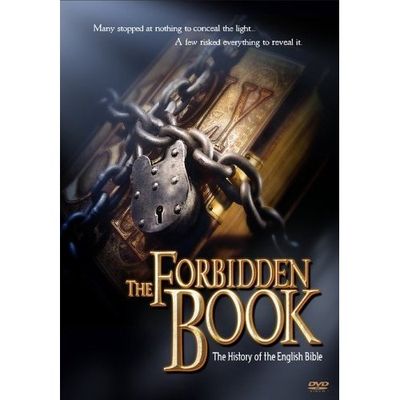
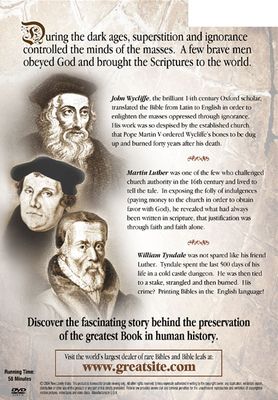
Flokkur: Trúmál og siðferði | Breytt 3.6.2008 kl. 03:08 | Facebook

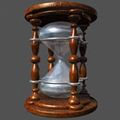
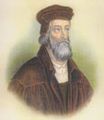


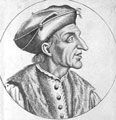
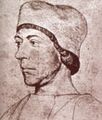

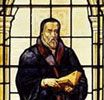








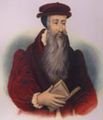




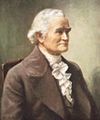
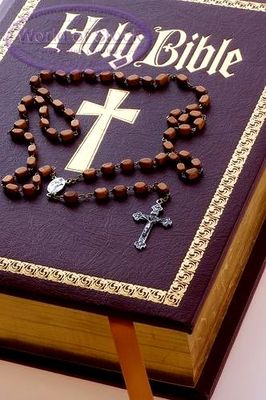
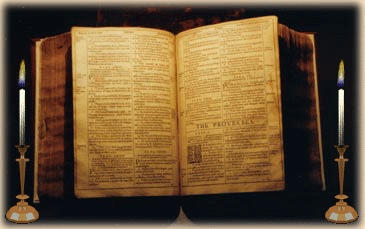
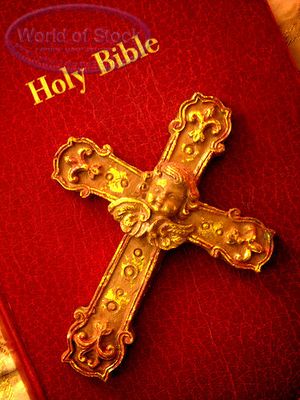
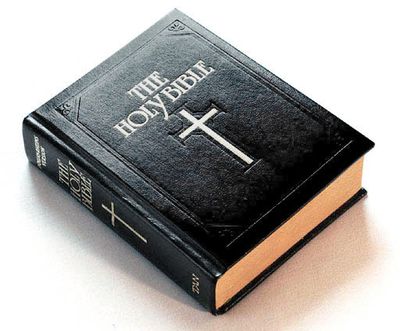

 Bryndís Böðvarsdóttir
Bryndís Böðvarsdóttir
 Rósa Aðalsteinsdóttir
Rósa Aðalsteinsdóttir
 Jón Valur Jensson
Jón Valur Jensson
 Janus Hafsteinn Engilbertsson
Janus Hafsteinn Engilbertsson
 Mofi
Mofi
 halkatla
halkatla
 G.Helga Ingadóttir
G.Helga Ingadóttir
 Tryggvi Hjaltason
Tryggvi Hjaltason
 Birna M
Birna M
 Helena Leifsdóttir
Helena Leifsdóttir
 Predikarinn - Cacoethes scribendi
Predikarinn - Cacoethes scribendi
 Sunna Dóra Möller
Sunna Dóra Möller
 Friðrik Páll Friðriksson
Friðrik Páll Friðriksson
 Gústaf Níelsson
Gústaf Níelsson
 Snorri Bergz
Snorri Bergz
 Gunnlaugur Halldór Halldórsson
Gunnlaugur Halldór Halldórsson
 Sigurður Sigurðsson
Sigurður Sigurðsson
 Svavar Alfreð Jónsson
Svavar Alfreð Jónsson
 Kristján Björnsson
Kristján Björnsson
 Guðrún Sæmundsdóttir
Guðrún Sæmundsdóttir
 Högni Hilmisson
Högni Hilmisson
 Andrea J. Ólafsdóttir
Andrea J. Ólafsdóttir
 Karl V. Matthíasson
Karl V. Matthíasson
 Sigríður Jónsdóttir
Sigríður Jónsdóttir
 Ingibjörg
Ingibjörg
 Alfreð Símonarson
Alfreð Símonarson
 Óskar Helgi Helgason
Óskar Helgi Helgason
 Jón Steinar Ragnarsson
Jón Steinar Ragnarsson
 Brynjólfur Þorvarðsson
Brynjólfur Þorvarðsson
 Sigurður Þórðarson
Sigurður Þórðarson
 Aida.
Aida.
 Ólafur Jóhannsson
Ólafur Jóhannsson
Athugasemdir
Frábært framtak hjá þér Enoch! Þetta aftur á móti er hellings lesning svo ég hef ekki enn lesið þetta en vona að ég finni tíma yfir helgina.
Mofi, 30.5.2008 kl. 17:14
Takk Kærlega fyrir það Mofi
Jóhann Helgason, 30.5.2008 kl. 18:25
Christian Glitter by www.christianglitter.com
Sæll Séra Enoch
Guð veri með þér um helgina og um ókomna framtíð.
Kær kveðja/Rósa
Rósa Aðalsteinsdóttir, 30.5.2008 kl. 20:12
Sæl Rósa Takk kærlega fyrir það sömuleiðis kæra vinkona
Guð Blessi þig
Kær/kveðja
Jói
Jóhann Helgason, 30.5.2008 kl. 21:40
Sæll Jói minn.
Þegar ég las innlegg frá Mofa þá mátti ég til að halda áfram með Enoch nafnið. Ég var örugglega búin að segja þér frá bróðursyni mínum sem heitir Enok Örn. Ég bað Guð að gefa mér bróðurson og ég varð bænheyrð. við fórum aðeins út að hjóla í dag og ætlum aftur að hjóla á morgunn.
Ég sá að þú varst búinn að taka afstöðu með laugardeginum. Ég sé ekkert við það að fólk ákveði það. Ég aftur á móti var alin upp á Hvítasunnuheimili þar sem sunnudagurinn var hvíldardagur. Hef aldrei verið í djúpum pælingum gagnvart þessu. Mest um vert að fólk taki hvíldardag. Pabbi og Sveinn tvíburabróðir hans lögðu áherslu á að taka hvíldardag þegar þeir voru að byggja öll mannvirkin sín sem þú sérð á myndinni sem ég setti inná bloggið þegar ég bloggaði um Bænargönguna. Þar sérðu litla bryggju og nokkur hús. Þetta er síldarplanið og húsin sem þeir byggðu. Rétt fyrir ofan götuna er hvítt hús með rauðu þaki. þar búum við pabbi. pabbi og Sveinn byggðu þetta hús þegar þeir voru 21 árs gamlir og síðar byggðu þeir annað íbúðarhús sem Sveinn flutti í ásamt fjölskyldu. Þeir byggðu líka Hvítasunnukirkjuna og þeir virtu alltaf hvíldardaginn. En þegar við vorum að salta síld fyrir aðra þá auðvita skárumst við ekki undan að bjarga hráefni og það var eins með þá bræður ef það var búin að vera bræla mjög lengi og öll netin komin í óveiðanlegt ástand og sumt af grásleppunni orðin eldgömul í netunum þá urðu þeir að fara þegar loksins lyngdi. En þeim þótti það ömurlegt.
þegar fólk vill ræða við mig um hvíldardaginn þá vil ég ekkert ræða það því ég hef aldrei neitt pælt að ráði og ég vil alls ekki þrasa um svoleiðis.
Guð blessi þig Jói minn og njóttu hvíldardagsins. Við tökum sunnudaginn og höfum samkomu þá. Sjáumst fljótlega í stuði með Guði.
Kær kveðja/Rósa
Rósa Aðalsteinsdóttir, 30.5.2008 kl. 23:40
Sæl Rósa Já 'eg búinn að taka afstöðu með laugardeginum og veit heimildalega er það réttur dagur en , á einum stað stendur að hvíldardagurinn var gerður mansins vegna , svo fólk fengi einhver tíman frí frá vinnu sinni .Takk fyrir ábendiguna Rósa að halda áfram enoch nafinu áfram mér finst það æðislegt nafn . Jú þú varst búin að segja þér frá bróðursyni mínum sem heitir Enok Örn. Æðislegt nafn """frábær bænheyrsla
þá. Sjáumst fljótlega í stuði með Guði.
Kær kveðja/Jói
Jóhann Helgason, 31.5.2008 kl. 01:28
Sæll Jói min og mér dettur ekki í hug að vera að sökkva mér niður í hvort sunnudagurinn sé réttari en laugardagurinn eða öfugt. Allavega ég og þú ætlum ekki að klóra hvort annað út af þessu. Ég var alin upp við að sunnudagurinn var hvíldardagur og ég var líka alin upp við að það var jólatré í stofunni á jólum og stundum fengum við páskaegg og stundum pening um Páskana. Þegar við fengum penning þá keyptum við okkur nammi því við fengum oft betri kaup með því. Við bræður mínir vorum auðvita miklir sérfræðingar. Ég sé að þú ert í stuði með Guði á síðunni hjá Guðsteini. Sennilega prófum að ljúka og þá er miklu fargi af þér létt og þá ertu eins og kýrnar þegar þær fara út úr fjósi á vorin. Þær eru svo léttar á sér og fjörugar. Lausar úr prísundinni.
Ég sé að þú ert í stuði með Guði á síðunni hjá Guðsteini. Sennilega prófum að ljúka og þá er miklu fargi af þér létt og þá ertu eins og kýrnar þegar þær fara út úr fjósi á vorin. Þær eru svo léttar á sér og fjörugar. Lausar úr prísundinni. 
Guð gefi þér góðan dag.
Kær kveðja/Rósa
Rósa Aðalsteinsdóttir, 31.5.2008 kl. 09:43
Bæta við athugasemd [Innskráning]
Ekki er lengur hægt að skrifa athugasemdir við færsluna, þar sem tímamörk á athugasemdir eru liðin.